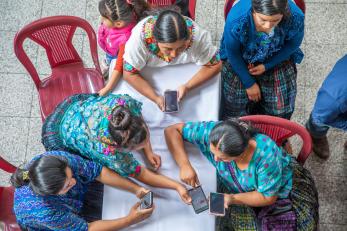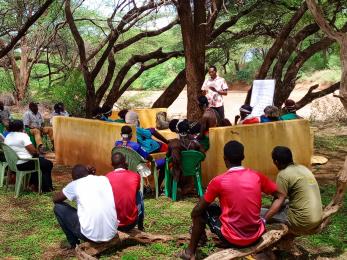Remittances for Anticipatory Action: Lessons from Pilots in the 2022-23 Hurricane Seasons

Anticipatory action aims to provide aid before disasters strike, minimizing losses and damages. With increasing climate-related hazards in Central America, such as droughts, floods, and tropical cyclones, the need for cost-effective solutions like anticipatory action is urgent. Remittances, which contribute significantly to the GDP and household income in many developing countries, present a potential sustainable funding source for anticipatory action.
Mercy Corps has piloted a Remittances for Anticipatory Action model in Central America, partnering with a digital financial services provider to send early warning messages and financial incentives to remittance senders in the U.S., enabling recipients in vulnerable areas to prepare for forecasted tropical cyclones (i.e., hurricanes and tropical storms).
This report documents the process of designing and setting up the model and the lessons from the pilots during the 2022 and 2023 hurricane seasons. These pilots were funded by the Carnegie Corporation of New York. The purpose of this report is to encourage further refinement and testing of this innovative approach. As such, the report includes the following considerations for others who wish to design and implement similar anticipatory action approaches or remittance-based interventions.
- Design for the context. Tailor the hazard, trigger, and anticipatory action mechanism to local conditions by consulting community members and stakeholders. For Central America, a remittance-based model for tropical cyclones was identified as a good fit based on assessments and consultations that focused on recent climate impacts and disasters, access and perception of weather information, and remittance behavior.
- Identify appropriate data sources. Select data that suits the hazard type, target audience, and model processes. For these pilots, NOAA data was ideal for its reliability, trustworthiness, and ease of automation.
- Streamline processes to gain time. Simplify processes to maximize the time available for remittance senders and recipients to act. Despite streamlining efforts in the pilot, only 36-48 hours remained for action due to the short period of time between when a tropical cyclone is forecasted and when its impacts are felt. Emerging technologies like blockchain may help gain more time.
- Address inherent uncertainty. Forecasts are probabilistic. Discuss the risks and potential impacts on program credibility and participant engagement if forecasted hazards do not occur.
The lessons from the 2022-23 pilots have resulted in improved processes for the Remittances for Anticipatory Action model. Mercy Corps hopes that these lessons will lead to further elaboration of the model and testing of its efficacy through future pilots.

